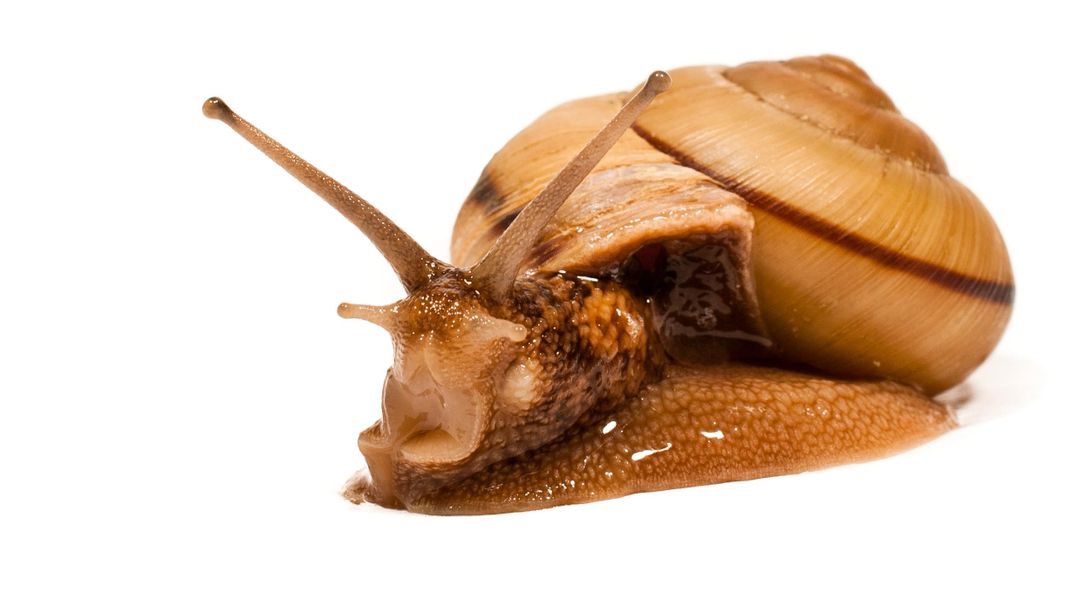Snail Shells Add a New Twist to the Mystery of Animal Asymmetries
After more than a century of searching, scientists have discovered a gene in snails that may control asymmetries inside many animals
/https://tf-cmsv2-smithsonianmag-media.s3.amazonaws.com/filer/e2/77/e277c913-3e0b-4f62-a4e0-6064675d0351/42-74884643.jpg)
Whether it flies, walks or swims, nearly any given animal has a body built of mirror images, with the left side reflecting the right. But this symmetry largely runs skin-deep. Inside humans, for instance, the heart sits to the left while the liver arches to the right.
For the last century, scientists have searched for the genetic code that gives rise to internal asymmetry in the animal kingdom, to create a more complete picture of how all creatures develop. These genes may even be traced back billions of years to the last universal common ancestor. Now an international team thinks they’ve found it—or at least, part of it, thanks to the humble pond snail.
Unlike most animals, snails carry their asymmetry on their backs in the form of the curls of their shells. To top it off, snails don’t necessarily always go the same way—most curl right, but others can curl left.
In a study published this week in the journal Current Biology, scientists report that the formin gene can control whether snail embryos begin developing a left- or right-curled shell. By making a single change in the billions of molecular letters that make up the snail genome, the researchers can switch a right curler to the left.
“You can liken finding the gene to finding a needle in a haystack,” says lead author Angus Davison, of the University of Nottingham.
Davison and his colleagues mapped the genomes of more than 3,000 giant pond snails, or Lymnaea stagnalis, and looked for differences between the left- and right- coiling mollusks. They first narrowed down where the gene of interest may be hiding and then started scanning for key differences in how well the genes were doing their jobs, aka building proteins that control an animal's biology.
Though a monumental task, Davison says that they caught a break. The team found a mutation in one gene that turned off protein production in the counterclockwise version of the snail.

“We got really lucky, because it turns out that the mutation knocks out the function of the gene,” he explains. This isn’t always the case. Though a mutated gene sounds nefarious, most of these natural alterations in the genome don’t have much effect on their hosts. In this case, though, a small change in the gene in question—formin—prevented it from building proteins.
The scientists then tried to change the ways baby snails develop by treating the snail embryos with an anti-formin drug. As expected, the drug caused the snails that normally curl clockwise to twist the opposite way.
None of the reversed snails survived the treatment. The exact reason for this is still unknown, since some snails do naturally exist with a counterclockwise curl. But “it is very difficult to change asymmetry without also changing other important functions,” says Davison. And formin is a gene previously found to help build cellular scaffolding in all animals, so alterations to the gene could have lethal consequences for the cells.
Curious whether this gene could be important for asymmetry in other organisms, the team treated developing frog embryos with the same anti-formin drug, and they got similar results—some frogs grew hearts on the "wrong" side of their bodies. This hints that the asymmetry that lurks within many more species may also be controlled, at least in part, by the formin protein.
This study caps more than a century of intrigue surrounding the snail shells’ curl.
Pathologist Arthur Edwin Boycott and his friend, amateur naturalist Captain C. Diver, published the discovery of a genetic control for twisting snail shells in 1923, based on their work breeding snails in glass jars. But unlike the inherited genes for human eye color, a right-curling snail doesn’t necessarily carry a right-curling formin gene.
It took nearly 60 years after that for scientists to figure out how this works. It turns out that the curl of the snail is controlled by some substance that the snail mom—a loosely used term, since snails are hermaphrodites—included in the egg’s innards, or cytoplasm. This substance altered the developing baby, influencing its direction of curl.
“That was 34 years ago,” says biologist Richard Palmer, who was not involved in the study, “and they’ve been trying to determine what [that substance was] ever since.”
Enter Davison and his colleagues. Using modern lab techniques, the team not only identified the gene, but they also determined that tiny subcellular asymmetries can be detected when the embryo is only two cells large. The results hint “that there’s some universal system controlling asymmetry at the macro level,” says Palmer.
After initially hearing of the discovery, his one-word response summed up the long quest: “Finally.”
But the case isn’t entirely closed just yet. The gene’s control on coiling doesn’t apply to all land snails, and there’s the nagging question of why snails, unlike humans, don’t all show the same asymmetric preference and consistently curl in the same direction, says Palmer.
Formin is likely only one in a set of genes that controls symmetry among animals, says Davison. But now that they at last have this gene in their sights, the team hopes these little curls will help them unravel why we all are a little off-kilter inside.

/https://tf-cmsv2-smithsonianmag-media.s3.amazonaws.com/accounts/headshot/Wei-Haas_Maya_Headshot-v2.png)
/https://tf-cmsv2-smithsonianmag-media.s3.amazonaws.com/accounts/headshot/Wei-Haas_Maya_Headshot-v2.png)